With gasoline prices in the U.S. bouncing around the two dollars per gallon mark, record high oil prices and growing uncertainty over the price and availability of future oil supplies, any new technology that can give consumers more bang for their buck should be welcomed. Domestic vehicle manufacturers have virtually abandoned further development of electric vehicles as an alternative to the internal combustion engine, and are now focusing on hybrid vehicles as an interim solution for higher fuel prices. Most are betting on hydrogen fuel cells to be the next big thing.
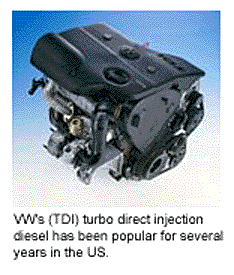
Yet there are much more cost-effective alternatives available now that can boost fuel economy without requiring an all-new technology. What’s more, the fuel required to power this highly efficient technology is already available at one out of three filling stations. It’s diesel fuel.
Diesel engines are nothing new. The basic design for a compression ignition engine dates back to 1892. Patented by Rudolf Diesel, the original diesel engine was developed to power industrial pumps. Diesel died mysteriously in 1913 when he disappeared from a cross-channel ferry boat. His body was never found, but his invention lived on.
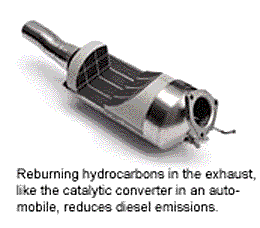
Over the years, diesel engines have powered everything from trucks to cars to Humvees and tanks. There have even been a few diesel powered Indy cars! The diesel’s ability to burn low volatile fuel (light oil, essentially) more efficiently than a comparable gasoline-powered spark ignition engine has made it a dependable workhorse for many decades.
In Europe where fuel prices are up to four times higher than in the U.S., diesel engines power over half of all new cars and light trucks. In France, Belgium, Austria, Luxembourg and Spain, 60 percent of new passenger vehicles are diesel. Yet in the U.S., diesel engines currently power less than four percent of the light vehicle market. The only applications where diesels dominate here are in big trucks, farm machinery and industrial engines. Over 91 percent of all heavy-duty trucks, 95 percent of transit buses and emergency vehicles, 60 percent of all school buses and 67 percent of all farm machinery are currently diesel-powered in the U.S.
DIESEL EFFICIENCY
Though diesel engines are roughly 30 percent more fuel efficient than same sized gasoline-powered spark ignition engines, traditional diesel engines with mechanical injection pumps are noisy and emit higher levels of some pollutants, namely oxides of nitrogen (NOX), particulates (soot) and nonmethane hydrocarbons (NMHC). Carbon monoxide (CO) emissions, on the other hand, are significantly lower with diesels. So too are carbon dioxide (CO2) emissions and hydrocarbons (HC).
Diesel engines are more efficient for several reasons. One is that diesels run very high compression ratios: 18:1 and higher. Increasing the compression ratio improves the thermal efficiency of the engine and squeezes more power out of the fuel. Diesel engines also run very lean fuel mixtures at idle, which improves fuel economy even more. And diesel engines are “unthrottled” and have no restrictive throttle plate to create pumping losses. Air is sucked straight into the engine with every intake stroke so there is no vacuum in the intake manifold. That’s why diesel engines require a separate vacuum-pump if they have vacuum-powered accessories.
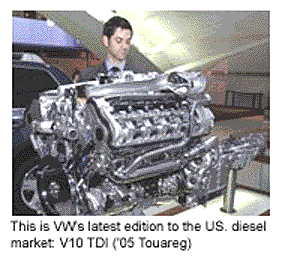
Many diesel engines are also turbocharged and can deliver increased power on demand by forcing more air into the cylinders. This allows the use of a smaller displacement engine to conserve fuel when extra power isn’t needed.
Diesel engines do not have spark plugs or an ignition system. The fuel is ignited by the heat of compression alone. When a diesel piston goes down on its intake stroke, it only draws air into the cylinder. The fuel is added later when the piston comes back up on its compression stroke and nears top dead center. At just the right moment, fuel is injected directly into the cylinder under very high pressure (1,500 psi to as much as 27,500 psi depending on the system!), which is high enough to overcome the compression in the cylinder. The air inside the cylinder has been heated to around 1,000 degrees F by compression, so the fuel vaporizes and ignites almost instantly the moment it is injected into the engine.
The combustion chamber in most diesel engines is actually in the top of the piston rather than the cylinder head. There is a bowl-shaped recess that swirls and compresses the air as the piston comes up.
For a diesel engine to run smoothly, the point of injection must be timed very carefully otherwise the engine will clatter and emit excessive smoke in the exhaust. On older diesel engines, a high pressure mechanical injection pump is timed much like a distributor by rotating its index position with respect to the camshaft.
On newer diesel engines with electronic controls, there is still a high pressure pump but injection timing is controlled by the powertrain control module (PCM). Inputs from a crankshaft/camshaft position sensor and injection control pressure sensor are used to calculate injection timing. The result is much cleaner, quieter combustion without the annoying idle rattle and smoke that’s usually associated with a diesel engine.
The new clean diesels typically use a common-rail fuel injection system with variable injection timing. Electronically controlled high pressure injectors release the precise amount of fuel at just the right moment. On GM’s Duramax diesel engines, for example, the system operates at 27,500 psi (1,900 BAR).
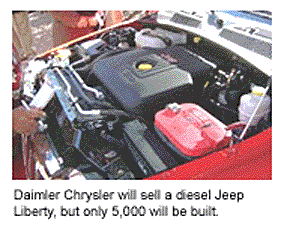
DIESEL FUEL
The temperature at which diesel fuel ignites is called its ignition point, and is defined by its “cetane” number rating. The higher the cetane rating, the easier the fuel ignites and the faster it burns. The lower the cetane rating, the higher the ignition point and the slower the fuel burns.
Diesel fuel with a cetane rating of 45 is typically required in light vehicle applications. Using diesel with too low a cetane rating increases noise (engine knock), soot and reduces power.
There are also two different “grades” of diesel fuel that are commonly used. Number 1 is more volatile, thinner and is used during cold weather. Number 2 is less volatile and is typically a summer grade fuel.
Why two different grades of fuel? Because diesel fuel is an oil that contains paraffin (wax). When the temperature drops below a certain point called the “cloud point” the paraffin begins to solidify and turn the fuel from a liquid into a gel. This can plug up fuel lines and prevent the engine from starting or running unless a fuel heater is used.
Something else you need to know about diesel fuel is that it contains more energy per gallon than gasoline – which is another reason why diesels get better fuel mileage than gasoline engines. One gallon of diesel fuel contains roughly 11 percent more energy than a gallon of gasoline.
DIESEL OPPORTUNITIES
An uncertain future for world oil supplies may be creating new opportunities for clean diesel technology. Some oil industry analysts are now saying world oil production will peak in 2005 and steadily decline thereafter. At the same time, the world’s vehicle population is continuing to explode, especially in China and many Third World nations. By switching more new vehicle production to diesel engines, the hope is that we can extend our limited oil supplies and reduce our dependence on gasoline (which requires more refining than diesel fuel) until the new hydrogen fuel cells go into production in significant numbers.
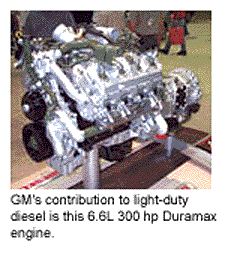
According to a recent J.D. Power and Associates Automotive Performance Execution and Layout (APEL) Study, overall diesel engines are rated higher than gasoline engines by their users. The greatest advantages for diesel engines are in range and fuel economy. But performance advantages depend on the application. For fullsize pickup trucks, a diesel engine can provide stump-pulling torque and payload hauling power. Diesels have been a big hit with truck owners. But in passenger car applications, diesel engines just don’t have the performance image of gasoline engines, even when they are turbocharged. So auto makers are focusing on the mileage advantages to help boost passenger car diesel sales.
Volkswagen, for example, offers a diesel-powered Passat that gets 38 miles per gallon with a driving range of 623 miles between fillups. By comparison, the gasoline-powered version is rated at 30 mpg on the highway.
VW and Mercedes are currently spearheading the diesel push in this country as far as the passenger car market is concerned. VW is now selling diesel-powered versions of its Passat, Golf, Jetta and Beetle cars, and a diesel-powered Touareg sport utility vehicle. Mercedes recently added a diesel option for its E 320 Class luxury sedans that is rated at 37 mpg on the highway (versus 27 mpg for the gasoline-powered model) – but only 3,000 of these cars will be available for sale in the U.S. this year. Daimler Chrysler will also be offering a diesel-powered Jeep Liberty later this year, but only about 5,000 of the 160,000 Liberty models it plans to build will have the diesel option.
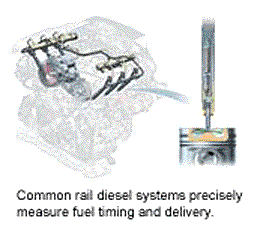
Currently, there are no domestic passenger cars with diesel engines, but they are offered in fullsize pickups and SUVs. Current domestic models with diesel options include Chevy Silverado, GMC Sierra, Dodge Ram, Ford E Series, F-Series and Excursion.
During the past six years, more than 2.5 million new diesel-powered cars and trucks have been sold in the U.S. Though the numbers are not huge, they are growing. Diesel usage in U.S. light vehicles has almost doubled over the last five years (from 2.2 percent in 1999 to 3.9 percent in 2004), and experts predict that diesel usage will probably double again and grow to as much as 8 to 15 percent of the passenger car/light truck market over the next decade.
The main obstacle in this country to the acceptance and use of more diesel engines isn’t so much consumers as it is emission regulations. Though more consumers may be interested in buying a diesel-powered car or SUV to cut their fuel expenses, diesel sales have been restricted in California and four Northeastern states because diesels do not meet local clean air rules.
In April this year, the U.S. Supreme Court ruled that California’s restrictions on diesel sales are invalid because it usurps the authority of the federal Clean Air Act. In 2000, California’s South Coast Air Quality Management District issued a regulation that said fleets that operated 15 or more vehicles had to buy alternative fueled vehicles (such as natural gas) when replacing their vehicles. The regulation effectively banned the purchase of diesel vehicles even if the diesel engine was actually cleaner than the natural gas-powered engine. The regulation was successfully challenged by the Engine Manufacturer’s Association and the Western States Petroleum Association, and was deemed a major victory for the future of diesels in California.
Diesel emissions are coming down thanks to improvements that have been made in diesel technology. According to the Diesel Technology Forum (www.dieselforum.org):
Particulate matter emissions of new on-highway diesel engines have been reduced 83 percent since 1988.
Nitrogen oxides (NOX) emissions of new on-highway diesel engines have been reduced 63 percent since 1988.
Emission standards for 2004 will cut NOX emissions in half for on-highway diesel engines.
Among all on-road mobile sources, heavy-duty vehicles account for only three percent of total carbon monoxide (CO) emissions, and only six percent of total hydrocarbon (HC) emissions.
PARTICULATE TRAPS
One of the keys to reducing diesel emissions even more is to use a “particulate trap” in the exhaust. Like a filter, a particulate trap can reduce soot in the exhaust by 80 to 90 percent. But traps eventually plug up and need to be cleaned periodically.
One way to reduce the need for maintenance is to also use an oxidation catalyst ahead of the particulate trap. By reburning hydrocarbons in the exhaust much like the catalytic converter in an automobile, particulates can be reduced before they reach the trap along with oxides of nitrogen. But to work efficiently, exhaust catalysts require low sulfur fuel (30 parts per million or less).
Clean diesel technology that uses a catalyst and particulate trap doesn’t work well with today’s high sulfur diesel fuel in the U.S. But new EPA regulations for 2007 will reduce the amount of sulfur that’s allowed in diesel fuel and may open the way for retrofitting many existing diesel engines with converters and particulate traps to reduce emissions.
New EPA regulations will also lower NOX emissions for trucks, which will require greater use of exhaust gas recirculation (EGR) and possibly catalytic treatment of the exhaust. The EPA is also proposing lower emission standards for stationary, locomotive and marine diesel engines. These too will require new clean diesel technologies and possible use of after treatment to remove particulates from the exhaust.
BIODIESEL
As we mentioned earlier, there’s more energy in a gallon of diesel fuel than a gallon of gasoline. But there’s also a LOT less diesel fuel in a 42 gallon barrel of crude oil than gasoline (9.2 percent versus 19 percent). Consequently, a significant shift from gasoline-power to diesel-power in the light vehicle market would put more of a strain on diesel fuel supplies and likely drive up the price.
There are a couple of alternatives here that may help the situation. Coal can be liquefied and made into diesel fuel, though currently it can’t compete economically with crude oil that’s pumped out of the ground. That may change though if current trends in world oil prices continue to spiral upward.
Another option is to make “biodiesel” fuel out of renewable resources such as soybeans, vegetable oil and animal fat. For example, recycled cooking oil from restaurant deep fat friers can be blended and burned with regular diesel fuel. Biodiesel blends like “B5” (5 percent oils from nonpetroleum sources) and “B20” (20 percent nonpetroleum oils) can be burned in many existing diesel engines with few if any modifications. It’s like blending ethanol alcohol from corn with gasoline to extend supplies and boost the fuel’s octane rating.
Biodiesel generally has better lubricity than ordinary diesel fuel, it burns cleaner (lower HC, CO and particulates), and provides a way to get rid of the growing stream of oil-based waste products in our society. Just think how many fast food restaurants there are in this country. On the other hand, when more than 5 percent is used in a diesel-fuel blend, it increases the risk of filter clogging because biodiesel has a stronger solvent action that may dislodge accumulated gunk inside the fuel system. It also alters the fuel viscosity, and may increase the risk of corrosion and seal incompatibility.
Straight biodiesel (100 percent nonpetroleum oil), doesn’t work so well in diesel engines unless it is formulated for a specific application. It also contains 5 to 7 percent less energy per gallon than ordinary diesel, which reduces fuel economy by an equal amount. But it doesn’t depend on the whims of wealthy oil sheiks or the political uncertainties of Third World nations either.
Time will tell if the current momentum towards greater use of diesels in light vehicles will continue, and how the new EPA diesel fuel and emission regulations will impact the market. It all depends on world oil prices, pump prices for gasoline and diesel, and consumer acceptance of clean diesel technology.













